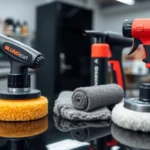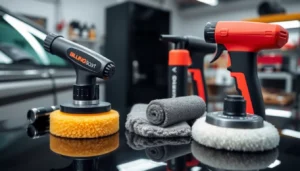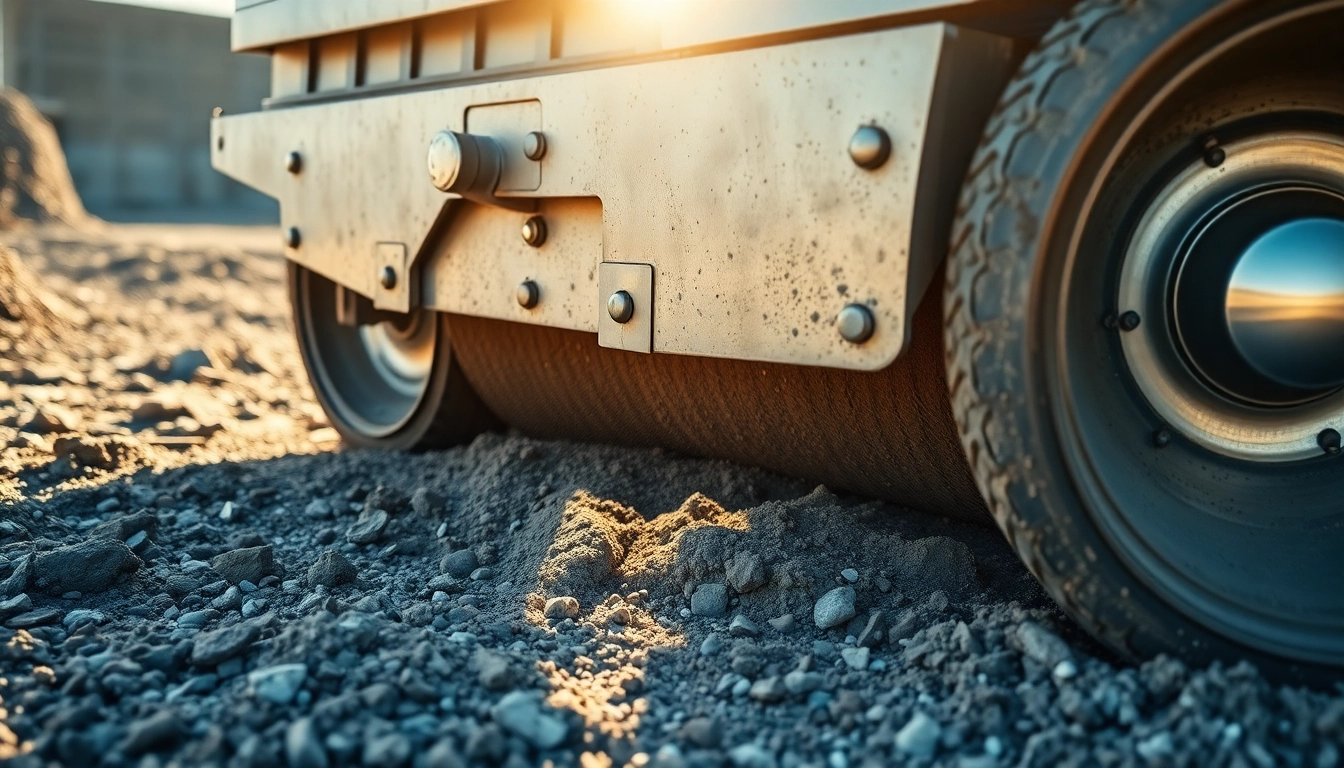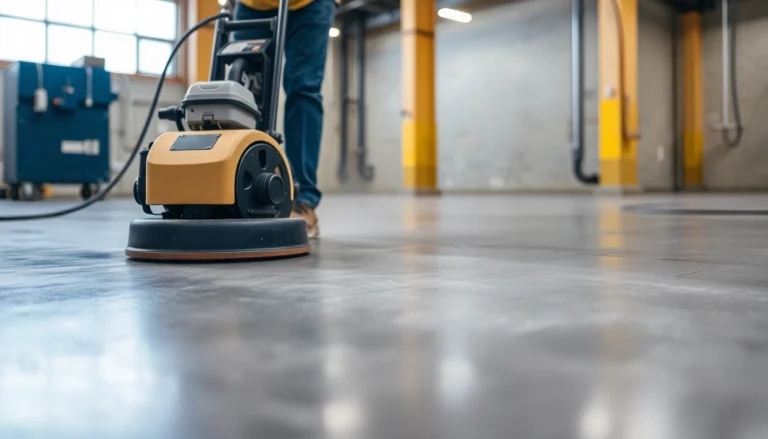Comprehensive Guide to Compactors Rental for Construction and Landscaping Projects
In the realm of construction, landscaping, and site preparation, the importance of proper soil compaction cannot be overstated. Achieving the right level of compaction ensures structural stability, prevents future settling, and enhances durability of surfaces. For professionals and DIY enthusiasts alike, renting the appropriate compactor is a cost-effective and efficient solution. By utilizing Compactors rental, users gain access to a wide variety of equipment tailored to diverse project needs, from small-scale patio work to large infrastructure developments. This comprehensive guide aims to provide an in-depth understanding of the different types of compactors available for rent, critical considerations in selection, safe operational practices, and tips to maximize performance and lifespan of rental equipment in the UK.
Understanding Different Types of Compactors and Their Uses
Vibrating Plate Compactors for Surface Preparation
Vibrating plate compactors, often known as wacker plates, are among the most commonly rented equipment for surface preparation tasks. They feature a flat, heavy steel plate that vibrates rapidly to compress soil, gravel, asphalt, and other granular materials. These compactors are ideal for creating a solid, even base layer for patios, driveways, walkways, and other landscaping projects. Their versatility makes them suitable for both small and medium-sized areas, offering control and precision.
For example, when preparing a foundation for a garden patio, a 300mm or 400mm petrol or electric plate compactor can significantly reduce manual labor and improve compaction consistency. They are particularly effective on granular soils, sand, and crushed aggregate materials. The key to optimal performance involves proper handling, such as maintaining consistent passes over the project area and avoiding overloading the machine.
Trench Rammers and Rammers for Narrow Areas
Trench rammers, or rammers, are compact, handheld machines designed for trenching and confined spaces. They are ideal for compacting narrow strips of soil or backfilling trenches, ensuring the stability of underground utilities, drainage systems, or foundations. Rammers typically feature a striking plate that moves vertically with force, effectively compressing soil in tight quarters where larger plates cannot reach.
For instance, utility contractors often rent trench rammers when installing pipes or cables, as their maneuverability allows for precise work in limited spaces. Rammers come in petrol and hydraulic variants, with power options suited to the scope of each project. Proper technique involves consistent vertical strikes, maintaining control to prevent uneven compaction and potential damage to surrounding structures.
Plate Compacting Machines for Large-Scale Projects
Large-scale construction projects, such as roadworks, airport runways, or large industrial foundations, require heavy-duty compaction equipment. Ride-on rollers and large vibrating plates are designed to cover extensive areas efficiently, offering high productivity and consistent compaction. These machines often come with dual drums, variable vibratory frequencies, and self-propelling features to optimize coverage.
An example includes a contractor renting a double drum roller to prepare a new asphalt surface, ensuring smoothness and durability. These machines require skilled operation, often with consideration for soil type, moisture content, and project specifications. They are invaluable for achieving high compaction standards necessary for critical infrastructure, reducing construction time significantly.
Key Factors to Consider When Renting Compactors
Machine Size and Power Suitable for Your Project
Selecting the right size and power of a compactor is fundamental to project success. Smaller projects, like garden patios or small pathways, typically require compact plates around 300mm to 400mm in width, with manageable engine sizes. Larger projects, involving expansive areas or heavier soils, demand more robust equipment such as vibratory rollers or larger plate compactors.
In practice, evaluating soil type, area size, and material for compaction guides the ideal equipment choice. For example, loose or sandy soils may need higher vibration frequencies, whereas cohesive clay soils might require additional moisture conditioning.
Rental Costs and Budget Optimization
Cost efficiency is a central concern when renting compactors. Rental prices vary based on equipment size, duration, and provider. Small plate compactors might range from £20-£40 per day, while heavy-duty rollers could cost upwards of £150-£200 per day or more. Weekly and long-term rentals often offer discounts, making it economical for extended projects.
To optimize your budget, consider assessing the precise equipment needed, avoiding over-specification, and negotiating rental terms. Additionally, understanding additional costs like delivery, pickup, and operator charges (if applicable) ensures accurate budgeting.
Rental Duration, Delivery, and Support Services
Precise planning of rental duration minimizes unnecessary expenses and ensures availability. Many providers offer flexible options, from daily hires to long-term rentals spanning weeks or months. Delivery and pickup services are often included or available at additional cost, crucial for sites without suitable transport arrangements.
When selecting a rental provider, verify support services such as operator training, technical assistance, and maintenance support. Efficient customer service minimizes downtime and technical issues, ensuring smooth project progression.
Best Practices for Safe and Effective Compactor Operation
Preparing the Site and Subsoil
Proper site preparation sets the foundation for successful compaction. Clear the area of debris, vegetation, and loose materials. Moistening dry soil enhances compaction efficiency, especially for cohesive soils like clay. For sandy soils, minimal moisture can improve stability.
It is advisable to perform test compactions to determine optimal moisture content and compaction levels. Mark the area to ensure even coverage and prevent over-application of equipment in any one spot.
Proper Handling and Working Techniques
Correct operation involves maintaining a consistent pace and overlapping passes. Operators should hold control handles firmly, keep the machine perpendicular to the surface, and avoid excessive pressure that could damage equipment or the subsoil.
Using the machine in a series of overlapping passes—either side by side or back and forth—ensures even surface density. Pausing periodically to inspect the surface and adjusting vibration intensity based on soil type enhances results.
Additionally, ensure operators are trained in safety protocols and familiarize themselves with the manufacturer’s instructions.
Maintenance and Post-Use Inspection
Routine maintenance prolongs equipment life. After each use, clean the machine, check for wear or damage, and lubricate moving parts as recommended. Inspect fuel and oil levels regularly and replace or top up as needed.
Post-operational inspections should include checking for loose handles, damaged wires or hoses, and vibrations performance. Documenting maintenance ensures accountability and readiness for future use. Maintaining equipment also upholds safety standards, reducing the risk of breakdowns or accidents.
Where to Find Top-Quality Compactors for Rent in the UK
Leading Rental Providers and Service Recommendations
The UK boasts numerous reputable equipment hire companies offering a wide selection of compactors. Large national chains such as Sunbelt Rentals, Travis Perkins, and Brandon Hire Station provide modern, well-maintained machines with flexible rental options. Local suppliers often cater to specific regional needs and may offer personalized service and competitive rates.
When selecting a provider, consider factors such as equipment availability, delivery options, after-sales support, and customer reviews. Many providers also offer online booking, making it convenient to schedule rentals in advance.
Tips for Finding Nearby Wacker Plate Hire Centers
Use online search tools with local keywords like “wacker plate hire near me” or “compactor hire in [your city]” to locate nearby centers. Comparing options based on proximity, rental costs, and equipment quality ensures the best value. Many equipment rental websites display availability and allow instant booking.
Additionally, visiting local hardware stores, construction supply yards, or trade suppliers can lead to reliable, immediate rental options, especially for small-scale or urgent projects.
Comparing Prices and Equipment Options
Always obtain multiple quotes and review what each includes—delivery, collection, and technical support. Understand the specifications of available compactors, such as weight, dimensions, vibration frequency, and fuel type, to match your project needs precisely.
Consider bundling services or requesting demo sessions to verify operator proficiency and equipment suitability before committing. Investing in quality equipment and reputable providers reduces risk and enhances project outcomes.
Maximizing Performance and Longevity of Rental Compactors
Regular Maintenance and Correct Usage
Proper handling extends the lifespan of rental compactors. Follow manufacturer instructions regarding operation parameters and avoid overloading or misusing the equipment. Regularly inspect for wear and replace worn parts promptly. Use the appropriate fuel and lubricants to ensure optimal performance.
Training operators on correct techniques minimizes undue stress on the machine and enhances compaction results, saving time and costs.
Storage and Transport Guidelines
When not in use, store compactors in a dry, sheltered environment to prevent rust and damage. Secure all moving parts and cover equipment to shield from dust and environmental elements.
Transport equipment on suitable trailers, ensuring secure fastening and adherence to vehicle weight limits. Proper storage and transport prevent accidental damage and maintain equipment readiness for future use.
Assessing Equipment Suitability for Future Projects
Evaluate if rental equipment aligns with your ongoing or upcoming projects. Maintaining records of machine performance and maintenance history helps determine if investing in purchasing or continuing to rent is more cost-effective long-term. Select versatile equipment that can serve multiple project types to maximize return on investment.



















